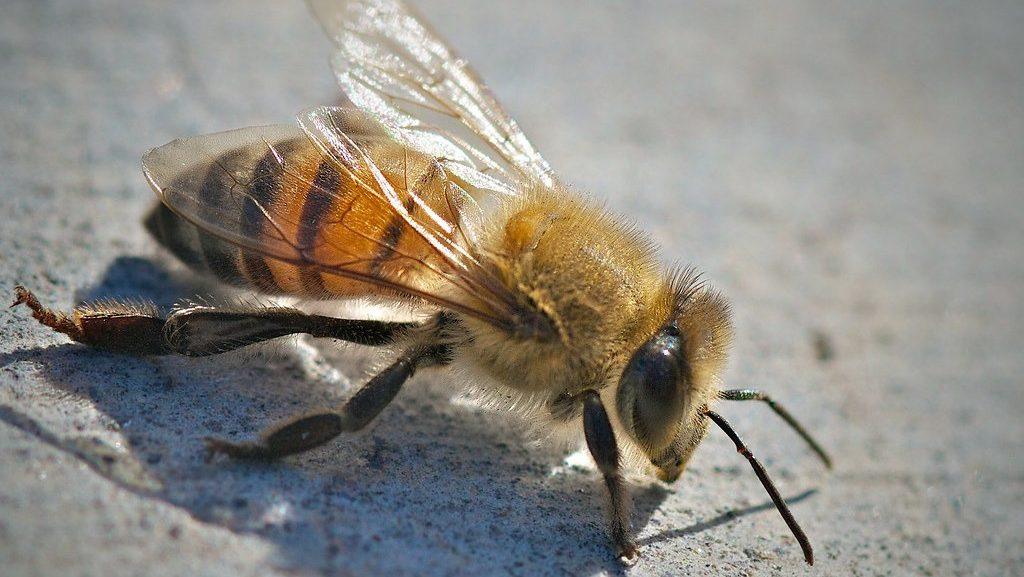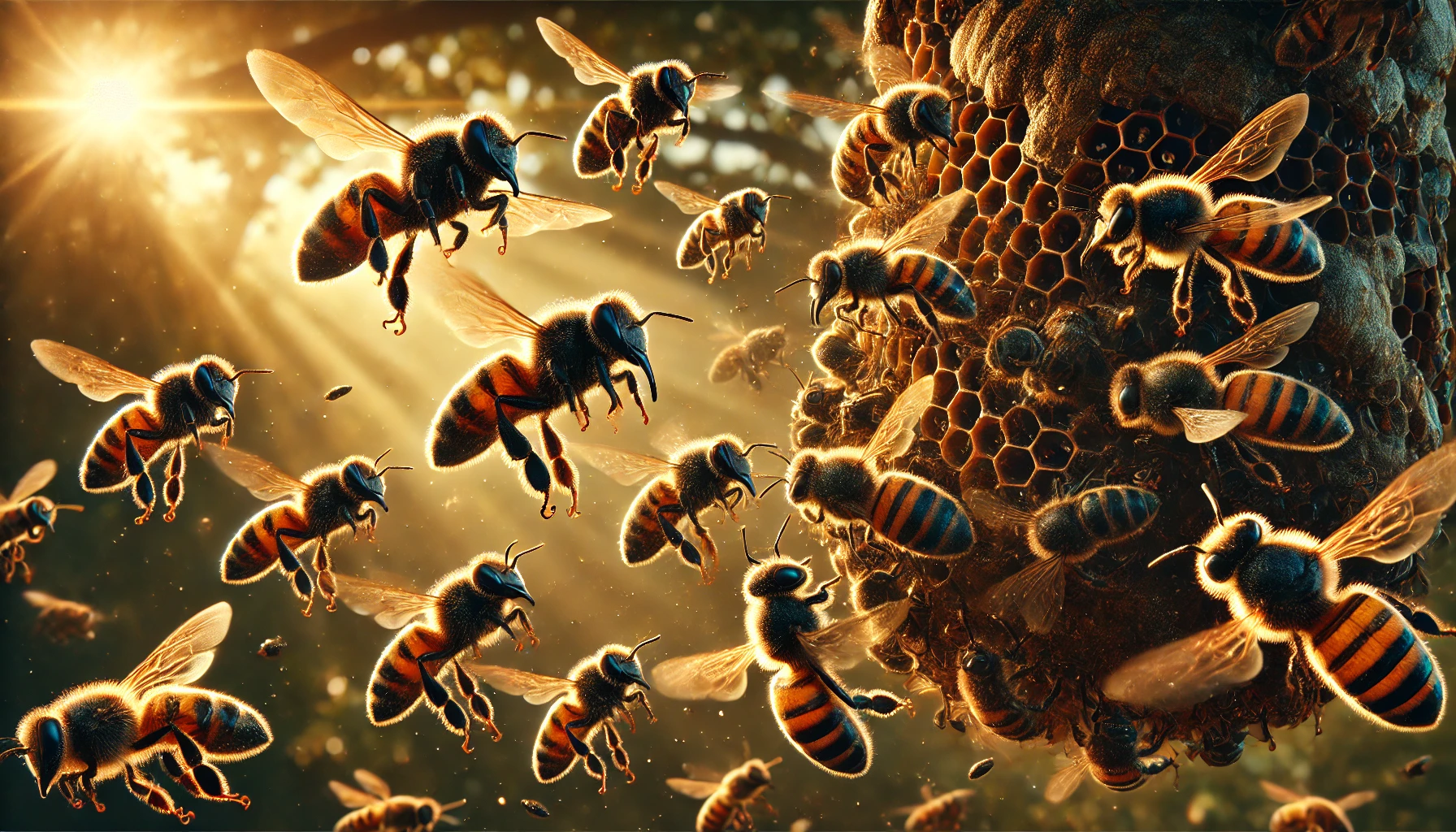Key Takeaways
- Most bees are not aggressive unless provoked.
- Bees sting mainly in self-defense or to protect their hive.
- Certain species, like Africanized bees, are highly defensive.
- Wearing light-colored clothing can reduce the risk of bee stings.
- Professional bee removal is the safest option for hive management.
 Many people assume that all bees are aggressive and likely to sting, but this is a common misconception. Most bee species are not aggressive unless they feel threatened or their nest is disturbed. However, some types of bees can be more defensive than others. If you’re a homeowner in the U.S., understanding bee behavior can help you coexist safely with these essential pollinators while also protecting your family from potential stings.
Many people assume that all bees are aggressive and likely to sting, but this is a common misconception. Most bee species are not aggressive unless they feel threatened or their nest is disturbed. However, some types of bees can be more defensive than others. If you’re a homeowner in the U.S., understanding bee behavior can help you coexist safely with these essential pollinators while also protecting your family from potential stings.
Are Bees Naturally Aggressive?
Bees Are Defensive, Not Aggressive Bees, by nature, are not aggressive insects. Unlike wasps, which can be provoked more easily and sting multiple times, bees only sting as a last resort. In fact, honeybees die after they sting because their barbed stinger remains in the victim’s skin, causing fatal injury to the bee. For this reason, bees are defensive rather than aggressive and will only sting if they perceive a direct threat to themselves or their hive.

Not getting a solution?
Get your free pest control estimate today!Common Triggers for Bee Defensiveness
Most bees usually prefer to stay away from human interaction, but certain situations compel them more likely to sting:What Triggers Bees to Attack
-
Protecting the Hive: Bees will aggressively defend their colony if they sense a threat nearby.
-
Sudden Movements: Rapid motions, such as swatting, can alarm bees and trigger a defensive response.
-
Strong Scents: Bees are attracted to floral perfumes, colognes, and even the scent of sweat, which may make them hover around you.
-
Dark Colors: Wearing black or dark clothing can make you appear like a natural predator (such as a bear), prompting bees to be more alert.
-
Disturbance by Noise or Vibrations: Loud noises, such as lawnmowers or leaf blowers near a hive, can agitate bees.
-
Seasonal Changes: Bees are generally more defensive in late summer and early fall when their food supply dwindles.
Which Bees Are the Most (and Least) Aggressive?
There are over 20,000 species of bees, and their behavior varies widely. Below are the most common types of bees found in U.S. households and their aggression levels: Gentle and Non-Aggressive Bees
Honeybees (Apis mellifera)
-
Aggression Level: Low – Honeybees are generally docile unless their hive is disturbed.
-
Behavior: One of the most common bee species in the U.S., they focus on pollinating flowers and gathering nectar.
-
Risk of Stinging: Only sting when defending their colony. Foragers rarely sting unless provoked.

Bumblebees(Bombus spp.)
-
Aggression Level: Low to moderate – Generally not aggressive but may become defensive if their nest is disturbed.
-
Behavior: Larger and hairier than honeybees, bumblebees are essential pollinators and usually harmless.
-
Risk of Stinging: Can sting multiple times but usually only do so if threatened.
Solitary Bees(Mason Bees, Leafcutter Bees, Sweat Bees)
-
Aggression Level: Very low – These bees are non-aggressive and rarely sting.
-
Behavior: Unlike social bees, they do not form large hives and have no colony to protect, making them highly docile.
-
Risk of Stinging: Minimal – Their stings are very mild compared to honeybees and are extremely rare.
Carpenter Bees (Xylocopa spp.)
-
Aggression Level: Moderate (males only)
-
Behavior: Male carpenter bees can be territorial and may hover aggressively near humans, but they do not sting. Female carpenter bees can sting but only if directly provoked. Males are more of a nuisance than a threat.
-
Risk of Stinging: Low – Carpenter bees rarely sting and are generally harmless to humans.

Africanized Honeybees (Killer Bees)
-
Aggression Level: High
-
Behavior: Africanized bees are far more defensive than regular honeybees. They look similar to regular honeybees but are known to attack in large numbers if their hive is disturbed and will chase threats for longer distances.
-
Risk of Stinging: High – Unlike other bees, Africanized bees react quickly and aggressively to disturbances, making them a potential danger if their hive is nearby.
How to Prevent Bee Stings and Avoid Aggressive Bees
If you want to enjoy your backyard without worrying about bee encounters, follow these simple and basic tips to minimize risks of bee encounters: 1. Avoid Swatting at Bees If a bee buzzes around you, just stay calm and move away slowly. Swatting at a bee can make it feel threatened and more likely to sting. 2. Wear Light-Colored Clothing Bees are less likely to react aggressively to white, light blue, and pastel colors. Avoid dark clothing such as black, as it may trigger their defensive instincts. 3. Limit Strong Scents Skip perfumes, scented lotions, and floral shampoos when spending time outdoors. These smells can attract bees and make them more curious about you. 4. Be Cautious Near Bee Hives If you notice a beehive on your property, do not disturb it. Give it space and contact a professional beekeeper or pest control service if removal is necessary. 5. Seal Openings Around Your Home Prevent bees from nesting near your house by sealing cracks in walls, attics, and siding. Carpenter bees, in particular, like to burrow into untreated wood. 6. Schedule Bee Removal Professionally If a hive is too close to your home or in a dangerous location, hire a licensed beekeeper or pest control expert to remove it safely. Do not attempt to spray a hive yourself, as this could provoke a large-scale attack.What to Do If You Are Attacked by Bees ?
Even with precautions, encounters with aggressive bees can happen. Here’s what to do if you find yourself in a swarm:Emergency Actions During a Bee Attack
-
Run to Shelter: Move quickly toward an enclosed space like a car or building. Do not jump into water; bees may wait for you to resurface.
-
Cover Your Face: Protect your eyes, nose, and mouth as you run. This helps prevent stings in sensitive areas.
-
Do Not Swat or Kill Bees: Crushing a bee releases alarm pheromones that signal other bees to attack.
-
Remove Stingers Quickly: If stung, scrape out the stinger with a fingernail or credit card to minimize venom release.
-
Seek Medical Help for Allergic Reactions: If you have trouble breathing, swelling beyond the sting area, or dizziness, call 911 immediately.





